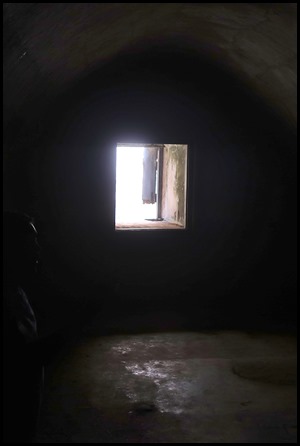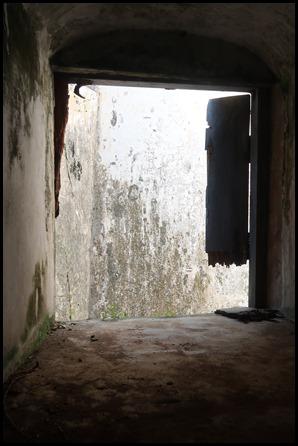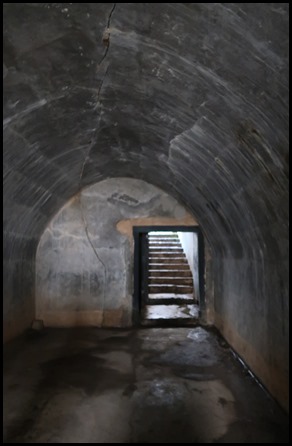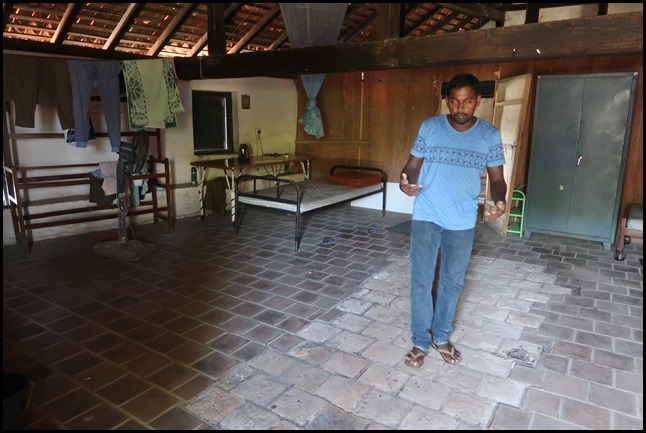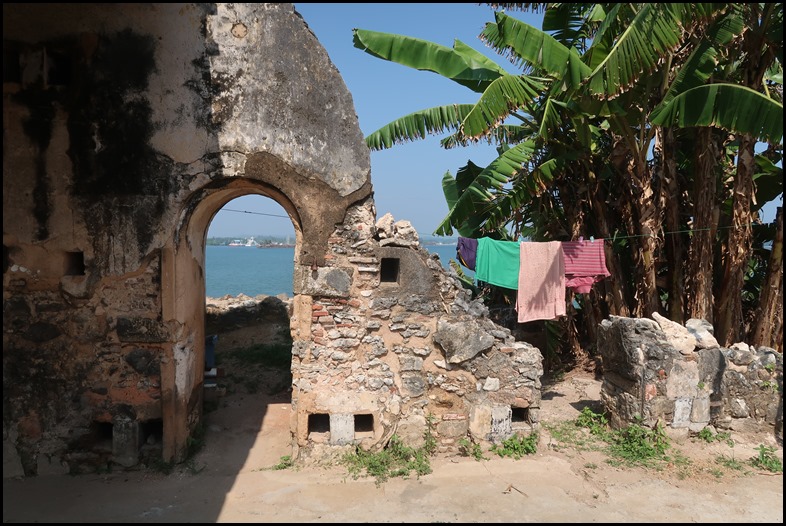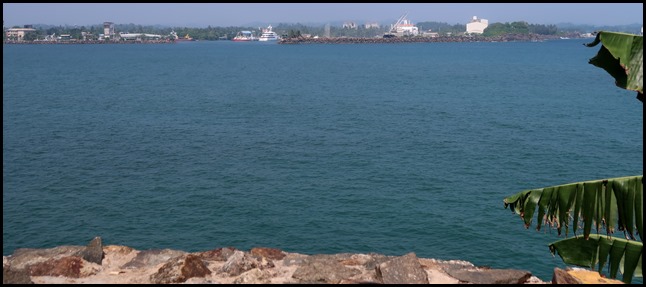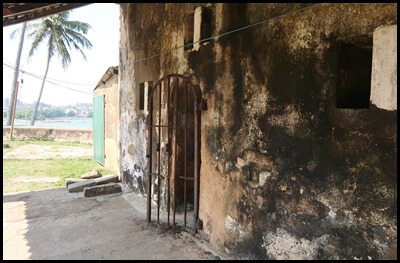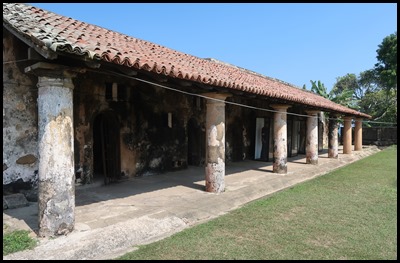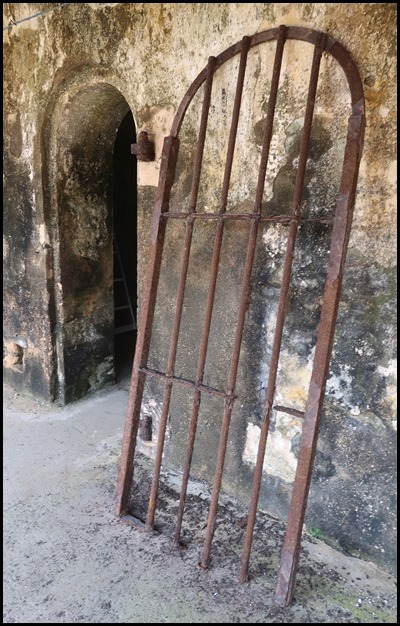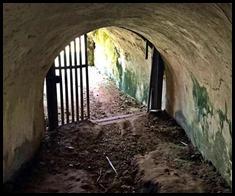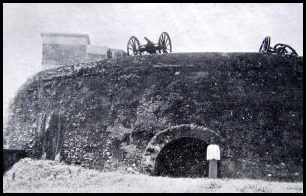Galle Black Fort

|
The Black Fort of Galle, Sri
Lanka
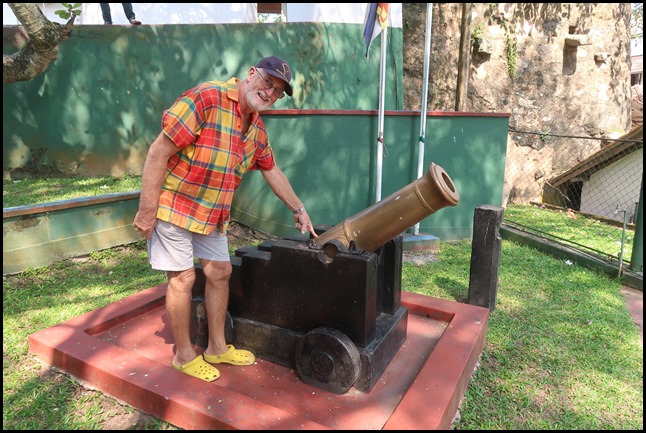 I had just got Bear posed with his
trigger finger when a voice up the slope behind us
called out “come and visit my home, The Black Fort, no tickets, come”, up the
slope we went........
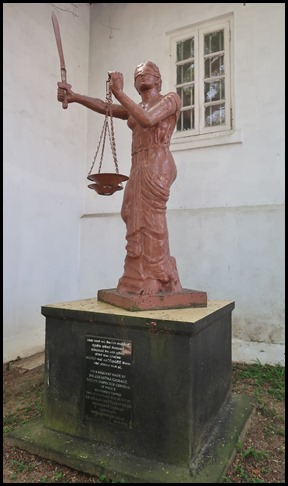 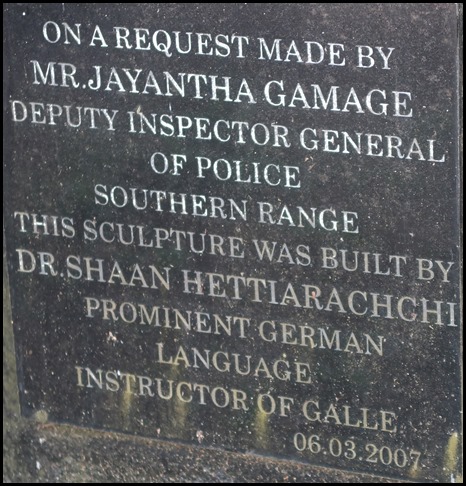 ........to our left a Lady of Justice and her
inscription.
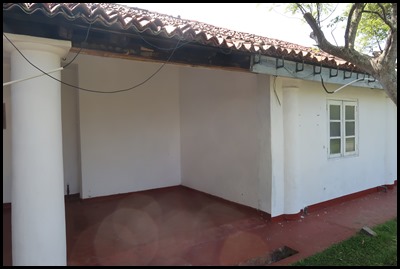 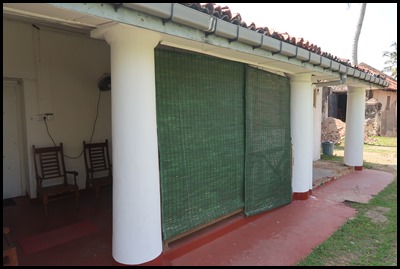 Our impromptu guide chatted away
merrily as we passed a little guardhouse, through a tiny garden and to our left,
nicely restored buildings, with evidence of
restoration and redecoration.
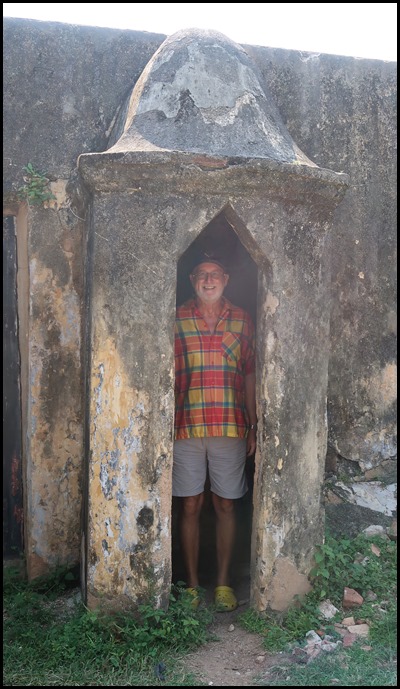 Bear was soon posing in an original
sentry box.
Black Fort, also called Zwart Fort, which can be
reached after walking along the Galle fort wall, it is the oldest bastion
built by the Portuguese and one of the fourteen bastions of this fort. It is
called Black fort because in the ancient times this place was always covered in
thick curls of smoke coming from canons and guns. The
Galle fort or the Dutch fort that crowns
the coastal area of Galle is nearly 500 years old and
stood strongly in the face of many calamities. It survived the December 2004
earthquake and its glamour and fineness owe much to the archaeological teams.
The history of the Galle Fort goes back to 1588 when King Rajasinghe I (1581–93) of Sitawaka attacked the Portuguese capital of Colombo forcing them to retreat to Galle, one of the flourishing ports from the ancient times. Here they built a small fort out of palm trees, coral stones and mud. They called it the Santa Cruz and later in 1625, extended it with a watch tower and three bastions and a Fortaleza to guard the harbourAfter the Portuguese conceded Galle to Dutch in 1640, the fort was expanded to its current size in 1643 and they called Santa Cruz the “Black Fort” or ”Zwart Fort” (Zwart Bastian). Why this Bastian was called the Black Fort is debatable, while some believe this was due the continuous thick curls of smoke emanating from cannons and guns in the Bastian and others believe that the name is due to being the location used as the holding cell for African slaves brought to the island by the Dutch. Around 2000-2001, a section of the Black Fort, and on top of it, a number of ancient prison cells collapsed and a section of the Sailors Bastion was washed out, due to high seas. The Sailors Bastion is the only one, which is not protected by coral reefs. It was therefore vulnerable for high waves. The Central Cultural Fund (CCF) undertook conservation works and in 2006 funded by Netherlands and now has been completed. The official residence of the Senior DIG (Deputy Inspector General) of police for Southern Province and his office is located inside this ancient Black Fort. Earlier you had to take special permission of the DIG’s office to access this site. But now this site is open to the public. A foot path has been built across the DIG’s office land with sign boards towards the fort.
Next, we went through a very old gate, down some steps to what used to be the armoury.
Our guide was very proud of his room where he had lived for the past ten years.
Opposite an old doorway with views across to Galle Port.
Galle Port and Marina across the bay.
The prison block.
The tunnel leads to the gate – beyond is the beach the fort used as its own. The fort from long ago showing cannon in place and the gate (seen to the left) and top left the prison block. 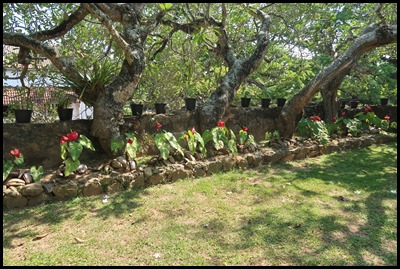 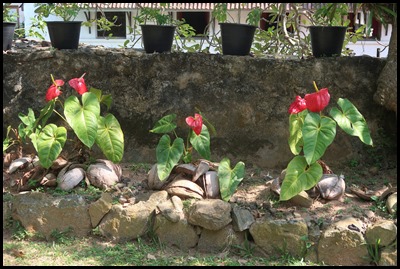 Back through the tiny garden neatly edged by Anthurium.
(Anthurium
as defined by Heinrich
Wilhelm Schott in
1829, is a genus of about 1000 species of flowering plants, the largest
genus of the arum family, Araceae. General common names
include anthurium,
tailflower,
flamingo flower
and laceleaf).
 Back past the little guardhouse, down the slope past the cannon and off
we continued on our bimble.
ALL IN
ALL A JOYFUL LITTLE SIDE TRIP
FASCINATING
FIND
.
|
